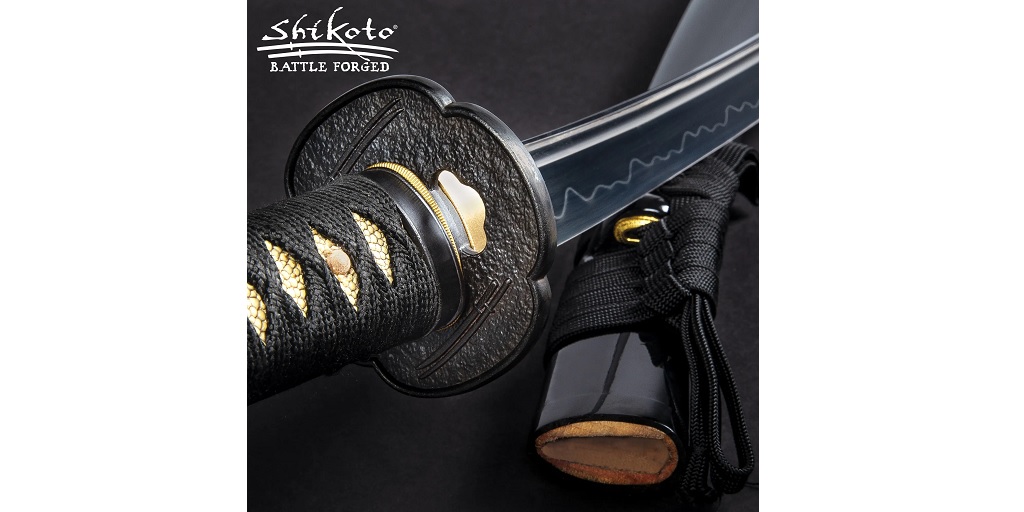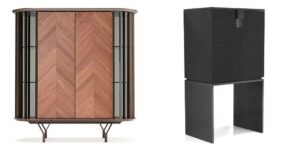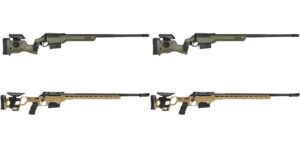
This short little article is going to open a can of worms and get everything sorted out succinctly, so buckle up.
What constitutes a “battle-ready” sword?
This is a term that is thrown around far too frequently by many who, unfortunately, have no idea what they’re talking about.
So let’s separate the wheat from the chaff. There are 3 main things that qualify a sword as “battle ready,” which will be detailed here – and no, a sword is not battle ready just because it is sharpened. Any steel can be sharpened, and that certainly doesn’t make it battle ready.
So, with no further ado, here’s what you need to know, from the highest level possible.
What Is a Battle Ready Sword?
First, we need to qualify what is meant by the term in the first place.
A battle ready sword is a sword that is forged and assembled in order to meet the rigors of actual (and reasonable) use.
This means a battle ready sword can be swung and used to strike and cut through obstacles such as soft targets, tatami mats, ropes, and other materials commonly used for live swordplay practice.
In short, a battle ready sword can do what a “real” historical sword can do.
Does this mean a battle ready sword can (or should) be brought into contact with hard objects such as steel or wood? No – and historically, this was avoided too, because even a high-quality sword, expertly forged and tempered, would be damaged by such activity.
But all in all, a “battle ready” sword is a “real” sword in every sense of the word.
Steel Chemistry
The first thing that qualifies a sword as battle ready is steel chemistry. That is, what elements constitute the chemical makeup of the alloy.
Oftentimes, sellers will tout a sword as “battle ready” if it has a “high carbon” blade. Unfortunately, this means nothing, as all steel contains carbon, and moreover, the more carbon an alloy has, the more brittle it will be.
For instance, take two similar alloys, 1095 and 1060. So named because they have .95% and .6% carbon (respectively) in their chemical matrices, 1095 has therefore more carbon than 1060.
However, (and this is important) the more carbon an alloy has, the harder and therefore more brittle the alloy will be. Therefore 1060 actually can make a more suitable sword alloy specifically because it is softer.
This is because 1060 (just as an example) can better withstand the stresses of contacting an object without running an excessive risk of chipping the edge or shattering the blade.
This is just one example, however – a label like “high-carbon” does not paint the full picture. Instead, look for alloys such as 1045, 1060, 1075, 7Cr13MoV, and some Damascus alloys. T10 is also sometimes used to produce swords, as well as spring steels like 5160, and notwithstanding what has been mentioned in this article, 1095 is also sometimes used, provided the steel is given the right temper during forging – the second element of a true battle ready sword.
Steel Temper
While a battle ready sword cannot be made from a poor quality steel alloy, all true battle ready swords must be given an appropriate heat treatment, commonly referred to as temper, in order to be used.
Temper refers to the process of physically manipulating (through heating and cooling) the blade steel so as to engender certain attributes. With a sword, these two attributes are hardness (edge retention) and flexibility.
With a knife, the main consideration is hardness. The harder the temper, the longer the edge will hold. The downside here with a sword is that if the steel is too brittle, it will chip or snap when struck or when the blade is subjected to a load.
Therefore, with a sword, is it absolutely critical that the steel be tempered in such a manner so that it can flex back and forth without shattering, chipping, or taking a set.
In truth, an entire volume can be written on the matter of steel tempering as a procedure – for which we don’t have room or time here.
Suffice it to say, if you want a “real” battle ready blade, it must be tempered.
Tang Construction
Lastly, a true battle ready sword must have a full tang that is integral with the blade stock, which is free of stress risers, and which is either full or nearly full.
Some producers of cheap swords use what is called a “rat-tail tang” in construction. A rat rail tang is either pinned or welded onto the blade stock and looks like a thin stick – hence the name.
No sword with “rat tail tang” construction is battle ready, period.
Moreover, the tang must be either full (the entire width of the blade, a common configuration), or, ideally, ⅔ or more of the width of the blade at the shoulder (where the blade meets the guard or hilt).
The tang may be tapered towards the pommel, but at any rate, no tang should have stress risers – sharp corners in design – that incur high stresses on the blade and can result in the blade snapping off at the hilt.
Shop Battle Ready Swords
You’re now familiar – at a very high level – with what constitutes a “real” battle ready sword.
So are you ready to see some?
Visit True Swords. They carry a wide range of real swords that can be used for actual swordplay and cutting, along with a bunch of high-quality historical reproductions, as well as reproductions of models that have been used in popular films such as Peter Jackson’s The Lord of the Rings trilogy.
Visit their website for more information and get in touch with them if you want to know more about what constitutes a real sword – they’d be happy to help.


